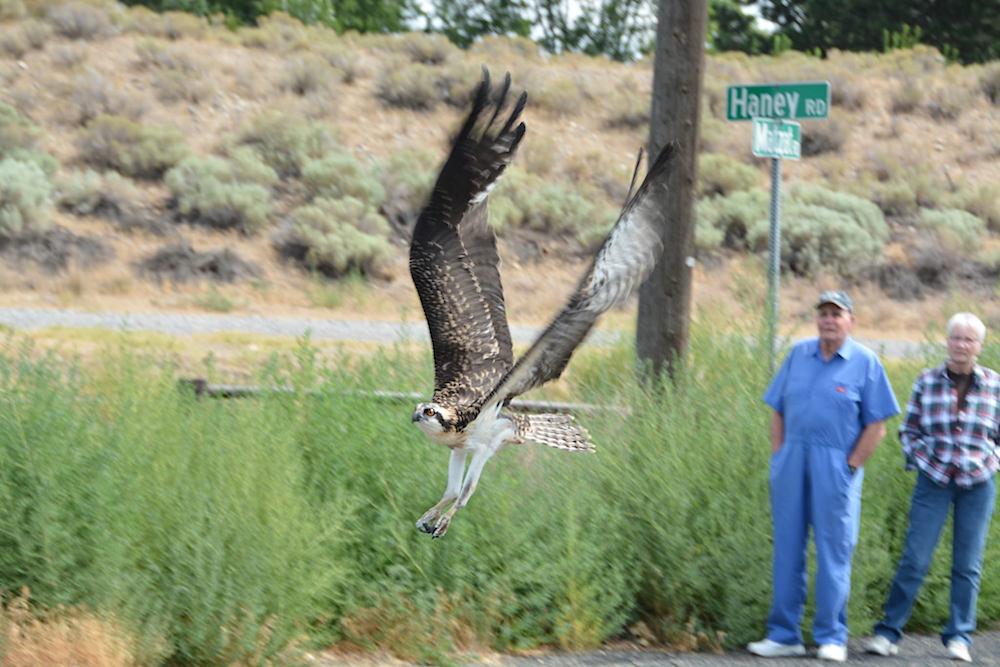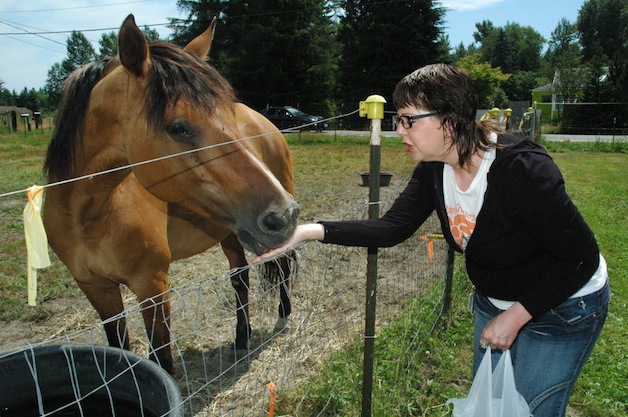Three young ospreys and a parent are flying free along the Columbia River today after surviving close calls with litter.
One of these ospreys was rescued by BPA linemen last week as it dangled from its nest in a tangle of plastic baling twine near Kennewick, Washington. The other two were pushed out of a different nest near Burbank, Washington, when their mother thrashed about in a wad of derelict fishing net.
U.S. Fish and Wildlife and Army Corps of Engineers staff captured and cut the mother free last month. All three youngsters were rehabbed at Blue Mountain Wildlife in Pendleton, Oregon.
Center director Lynn Tompkins said the trio was released together at the first nest this week.
“The parents are still there. They’ll feed all three babies. Birds are just amazing that way. It’s like the one baby went back to his nest and he brought two friends home from camp,” Tompkins said with a chuckle.
Tompkins said the second nest was not easily accessible to stage a release there. She said ospreys have an unhealthy fondness for feathering their nests with discarded baling twine or fishing line. No one can explain why.
Twice earlier this year, volunteers with Tompkins’ center responded to osprey entanglements, but the birds were dead by the time rescuers arrived.
“This is as good as it gets. Three out of three,” Tompkins enthused.
She wishes more fishermen and farmers would pick up after themselves when fishing line gets snagged or hay bales are cut loose. “You know, people don’t think of the consequences of their actions, leaving all this stuff around. Or it’s not convenient or something,” Tompkins said.
The U.S. Fish and Wildlife Service said it has been involved in five rescues of entangled ospreys in the last three years just around its Mid-Columbia refuges.
“It’s a really big problem, and who would have thought it,” USFWS natural resource planner Dan Haas said. “It’s a miracle there aren’t more entanglements.”
Haas participated in the initial rescue of the osprey chick pair near his office in Burbank, Washington. He said he is delighted the young raptors recovered from their ordeal and were successfully released back into the wild.
“Who knows how many are dying without ever being discovered,” Haas said.
Recycling programs have started in Oregon’s Willamette Valley and Idaho’s upper Salmon River valley to collect used baling twine so the ospreys can’t get it and bring it to their nests in place of lichens and grasses.




